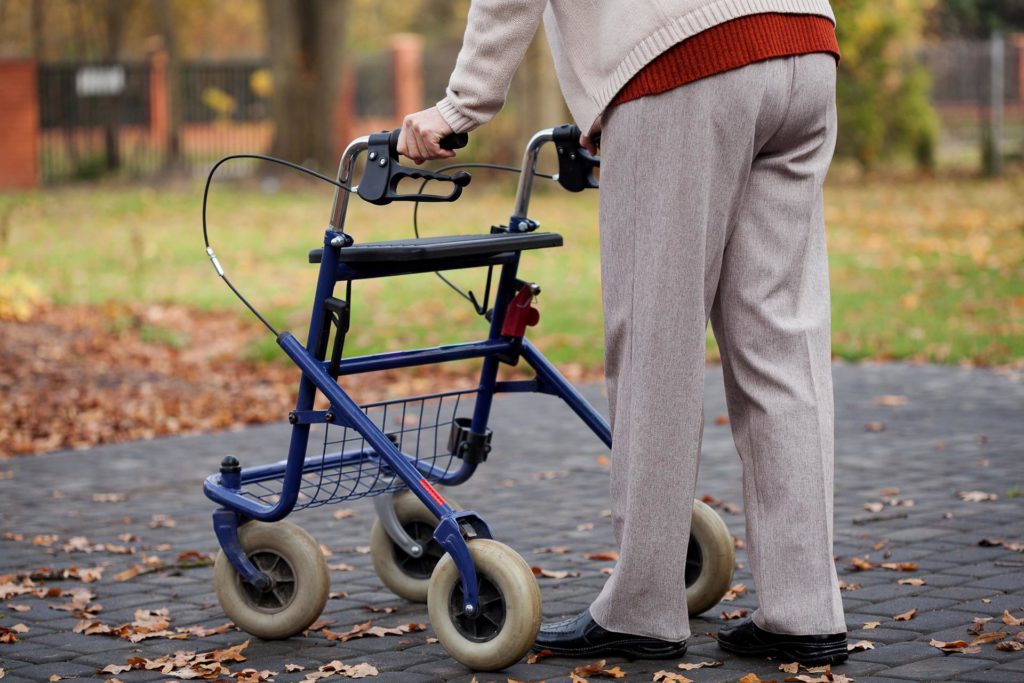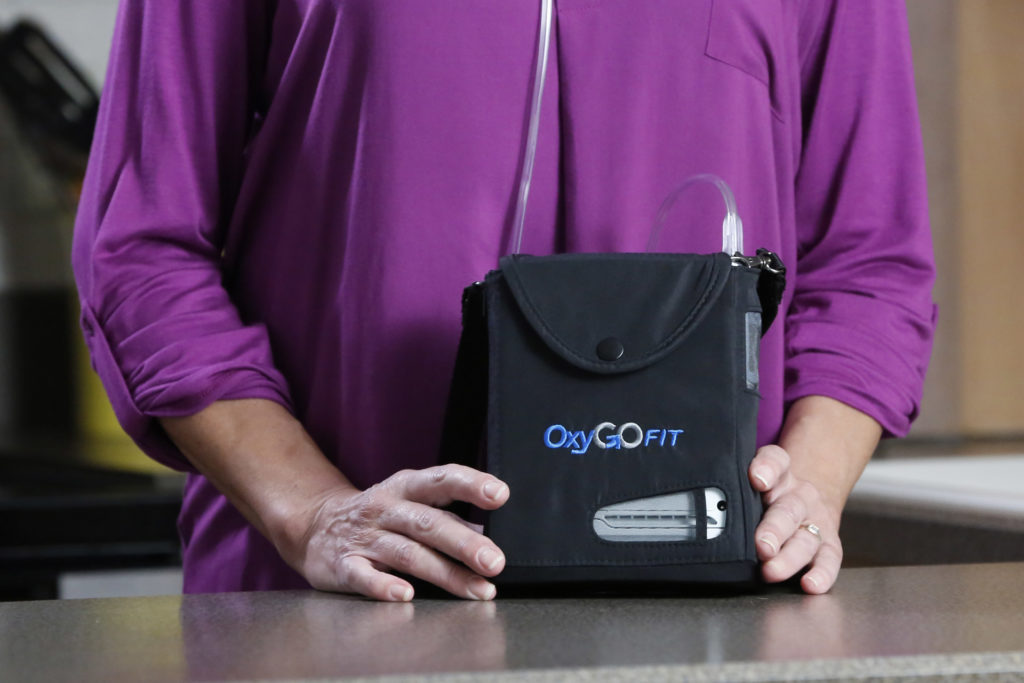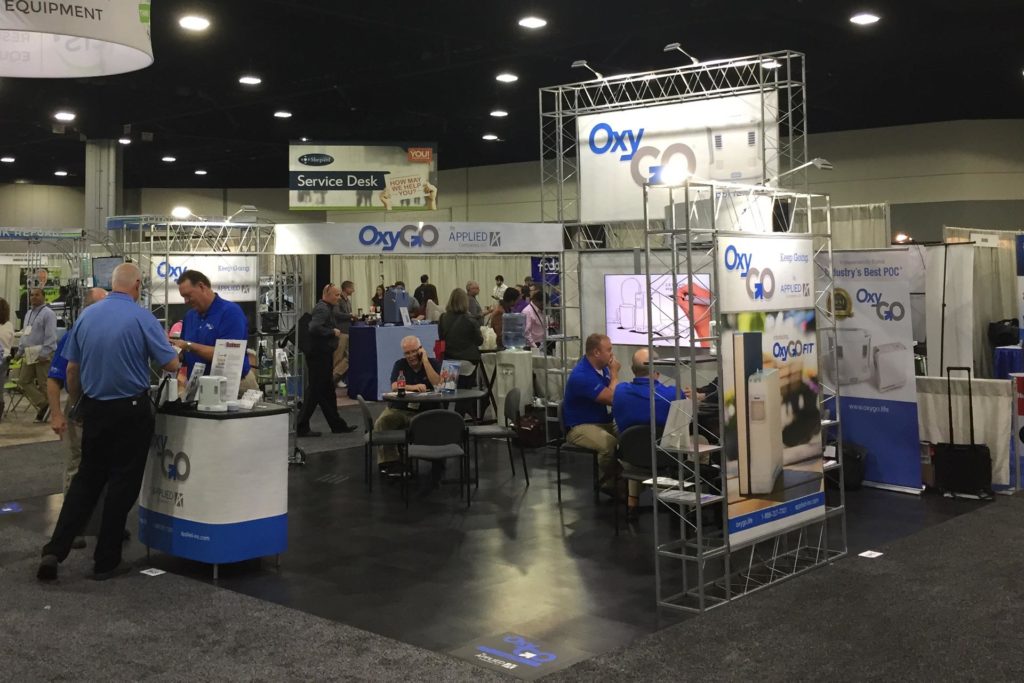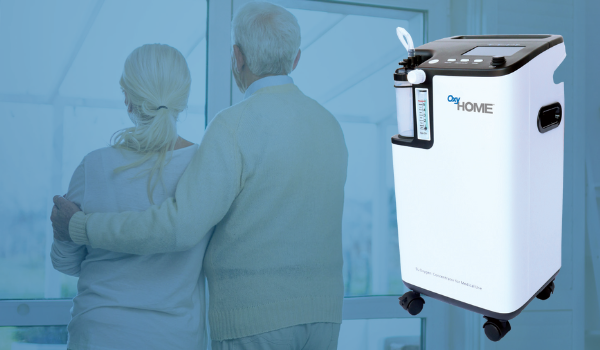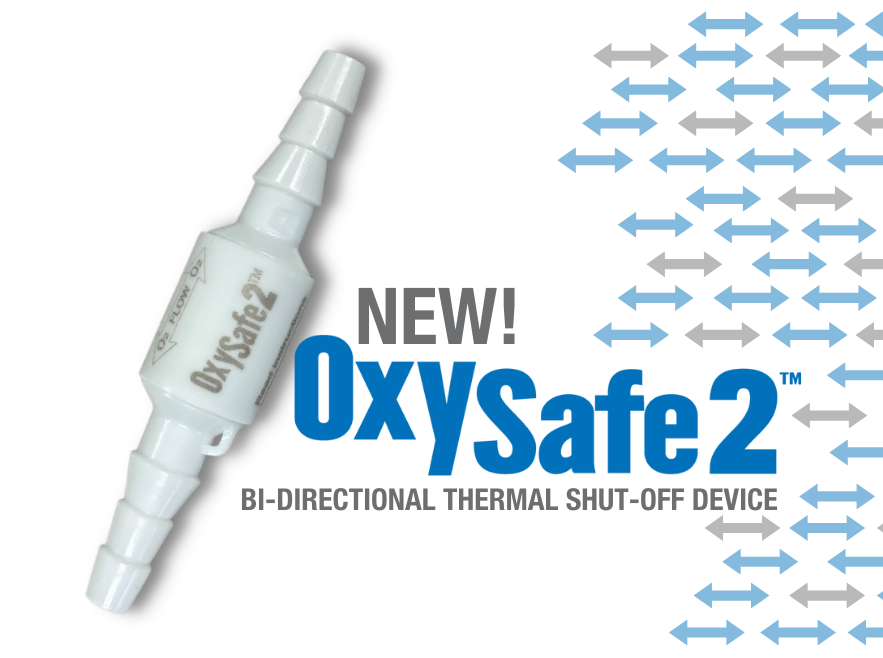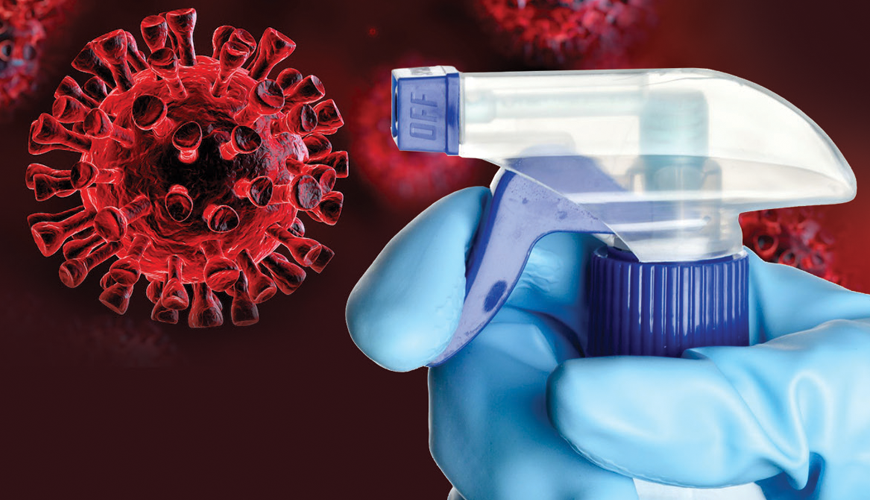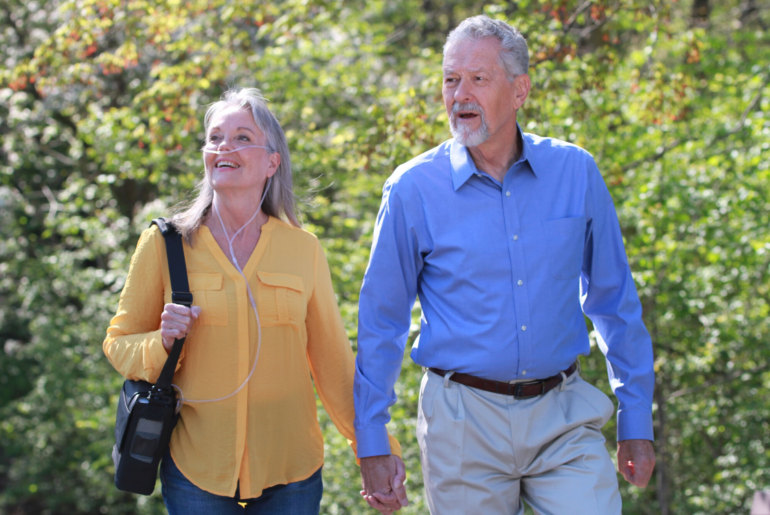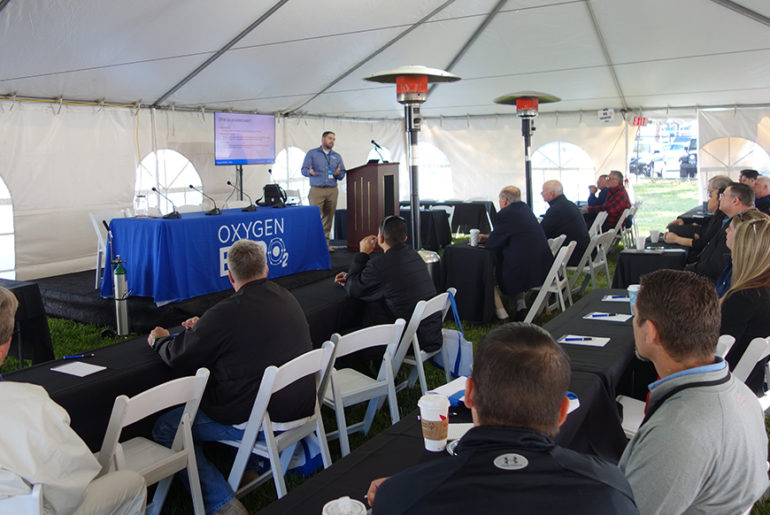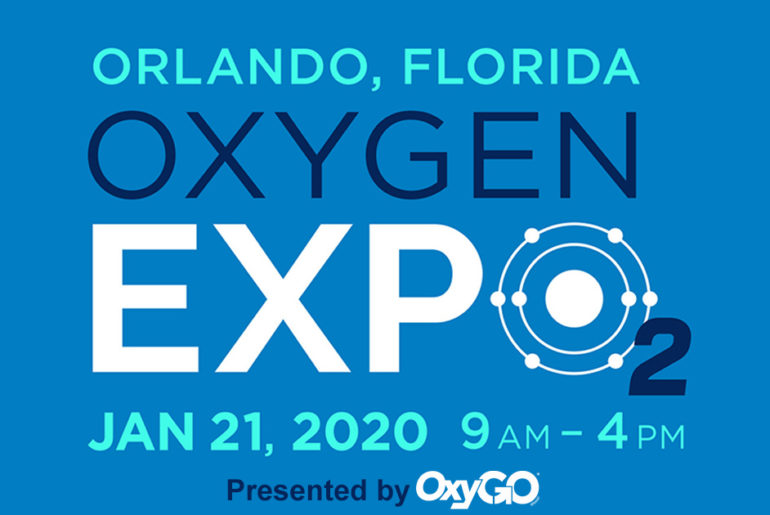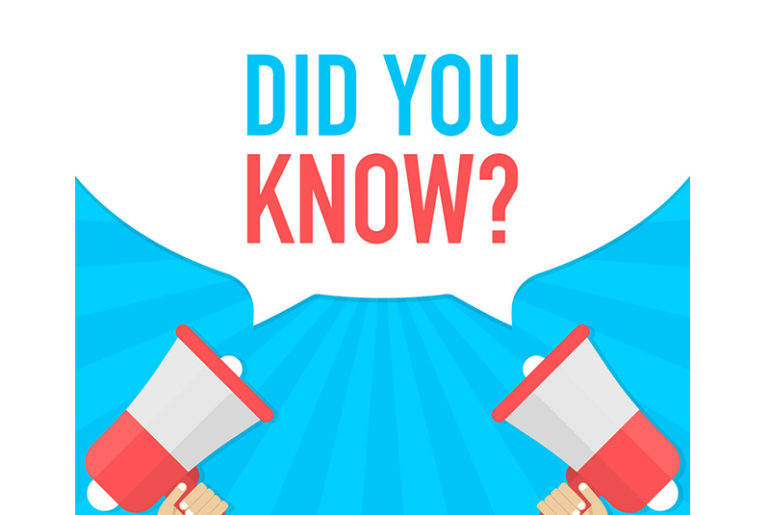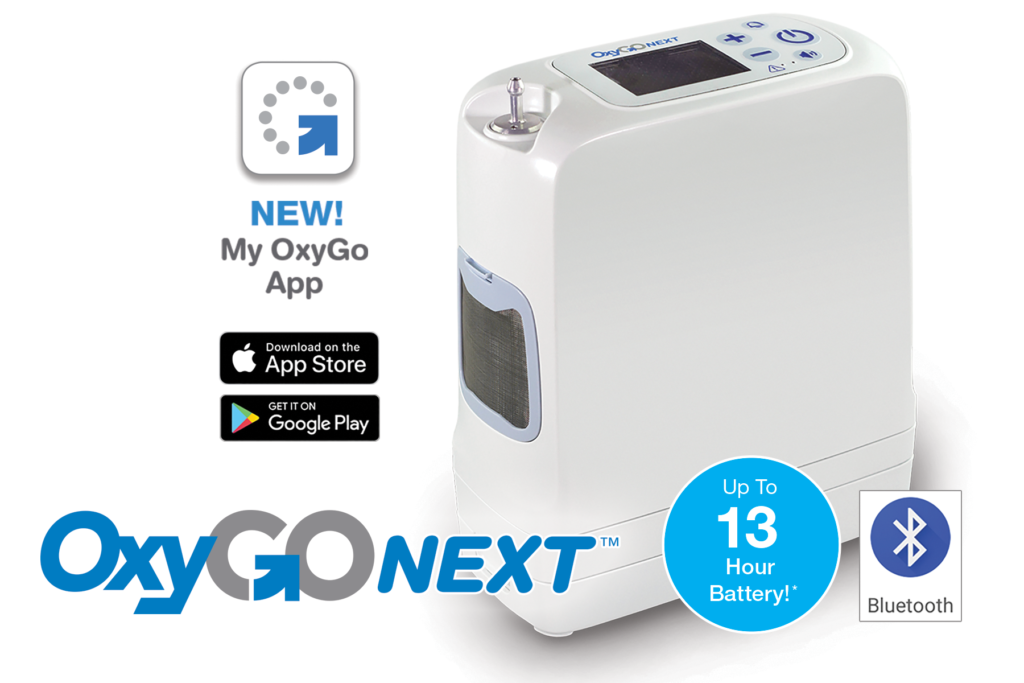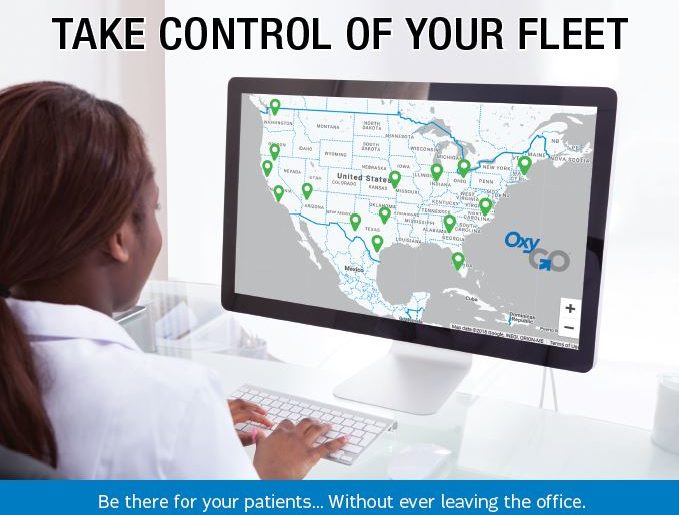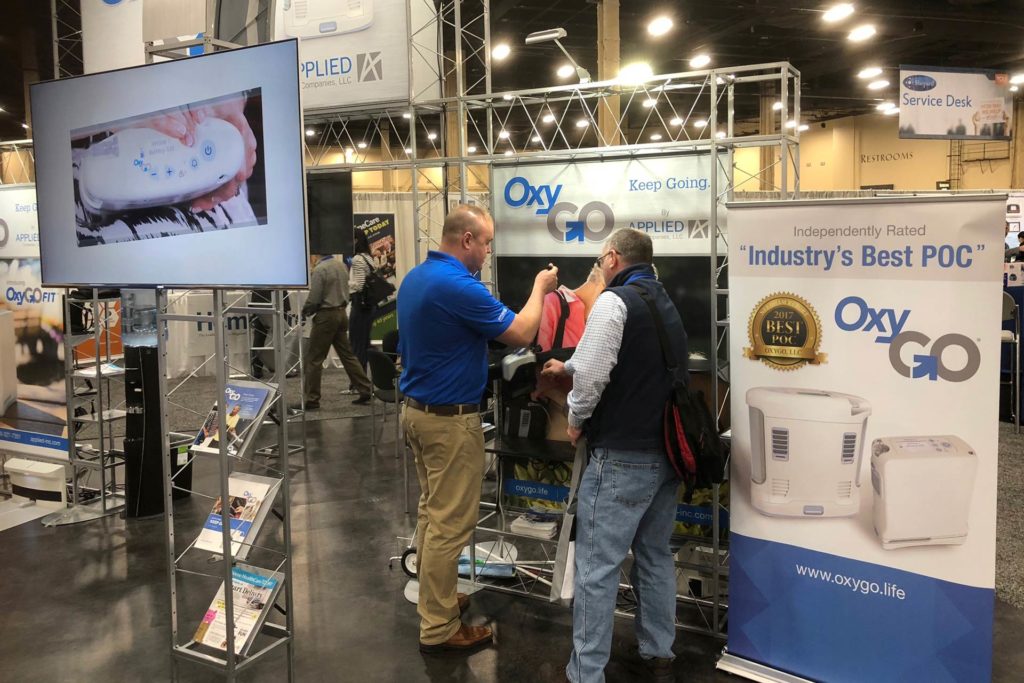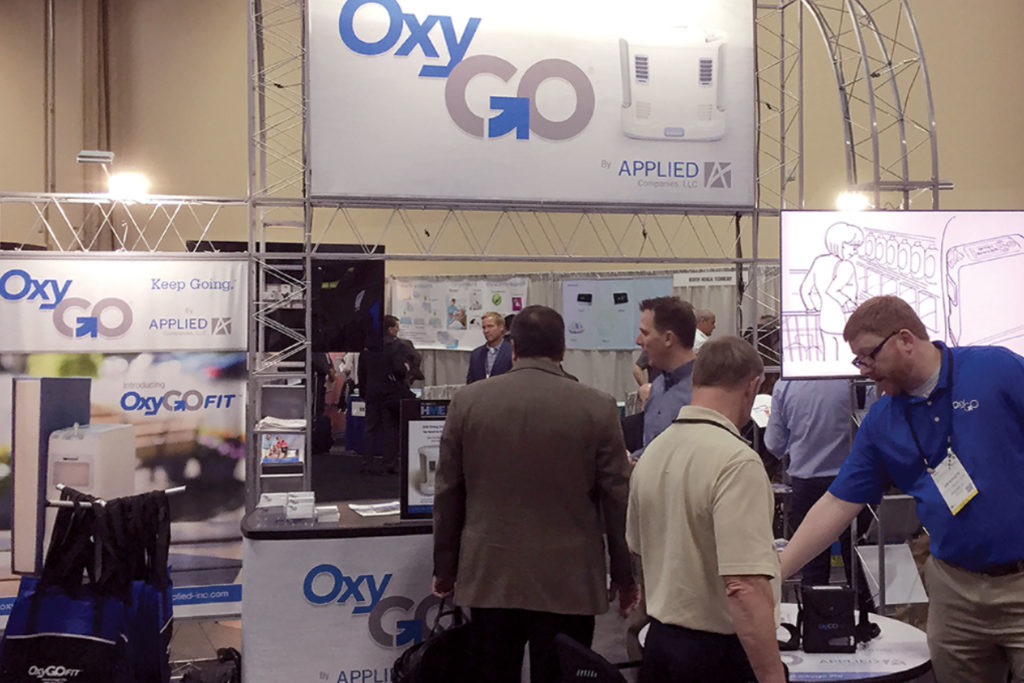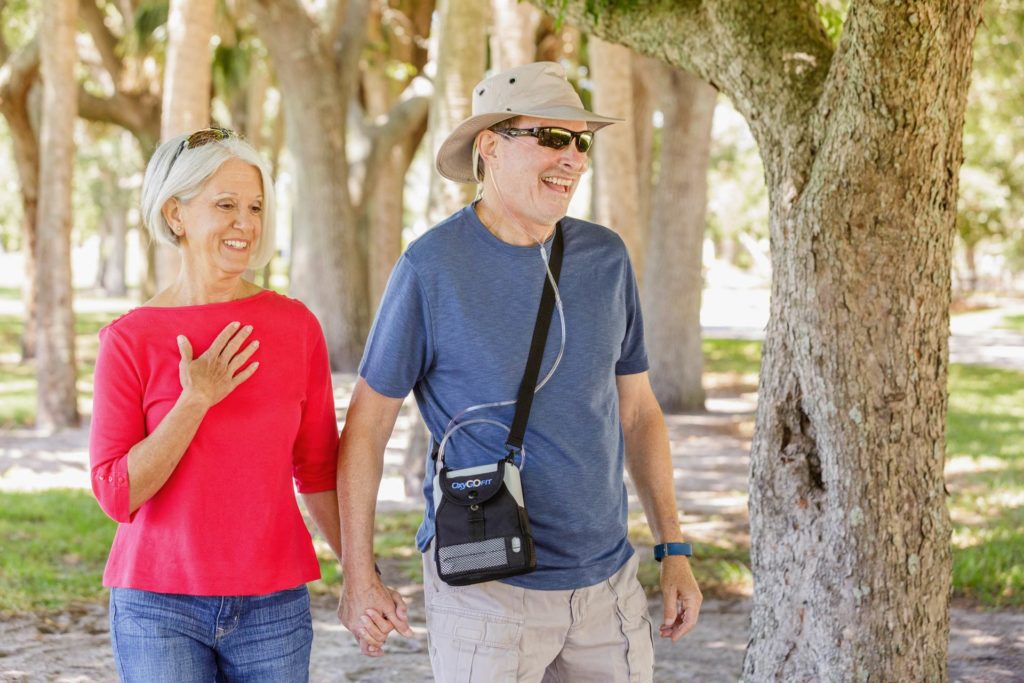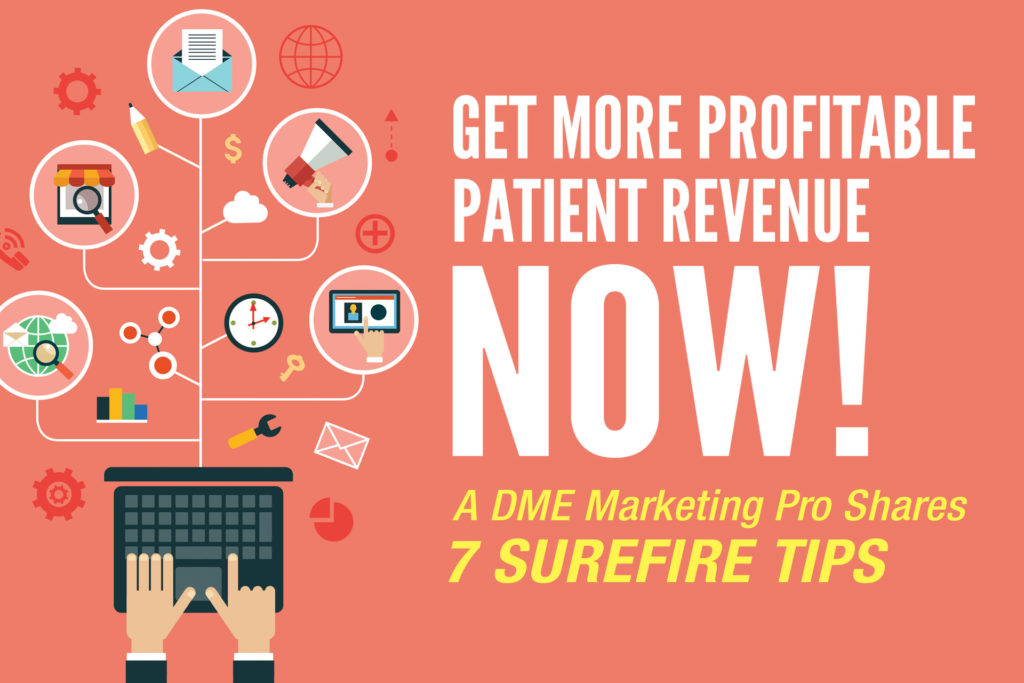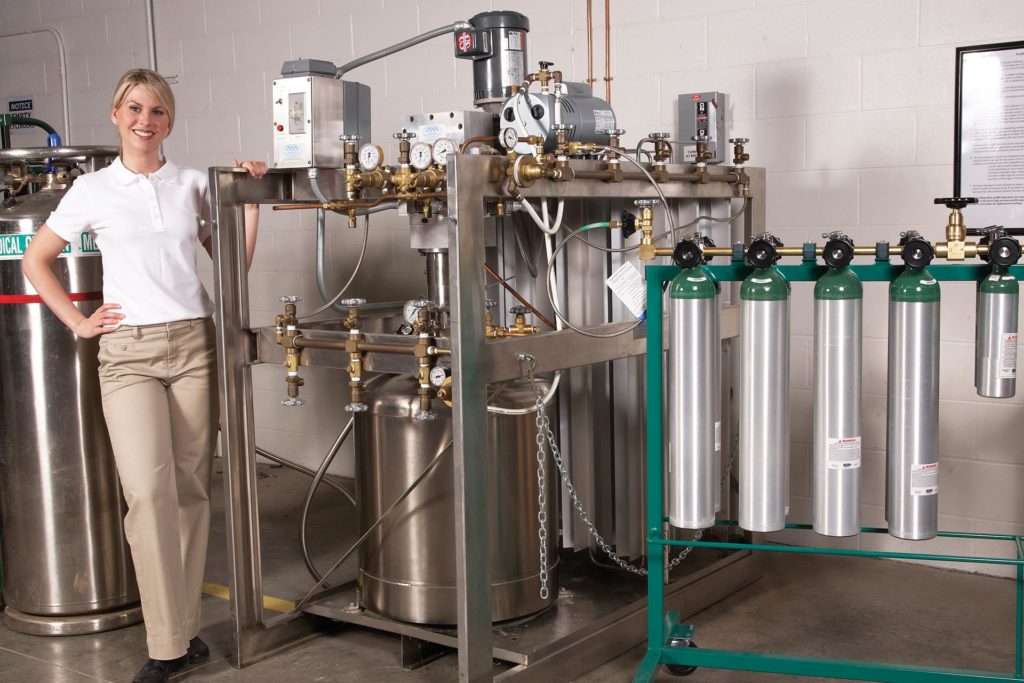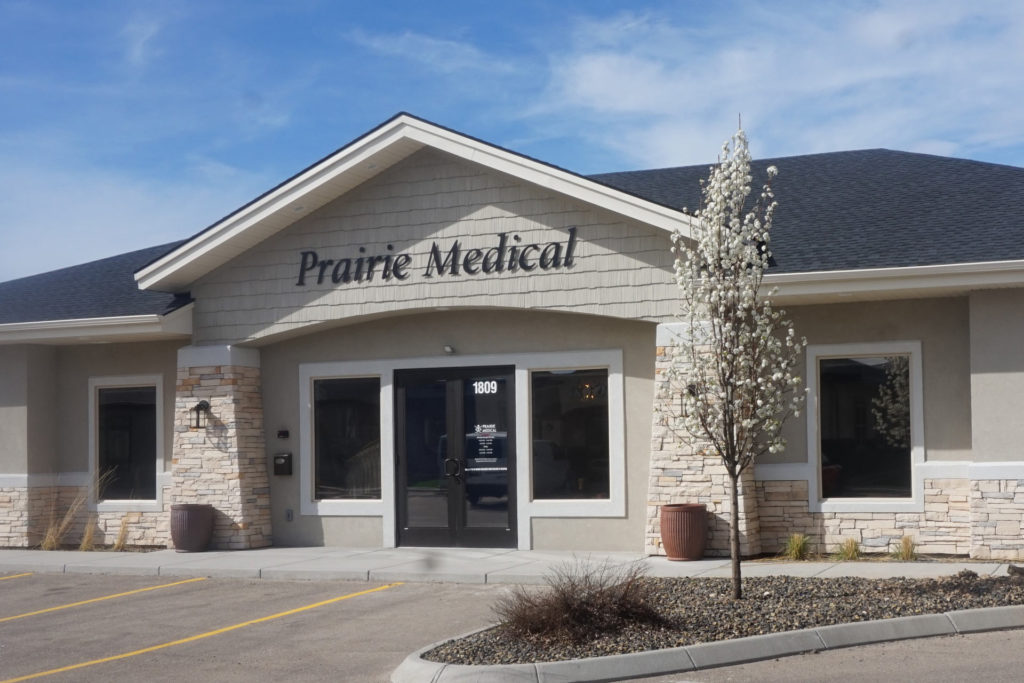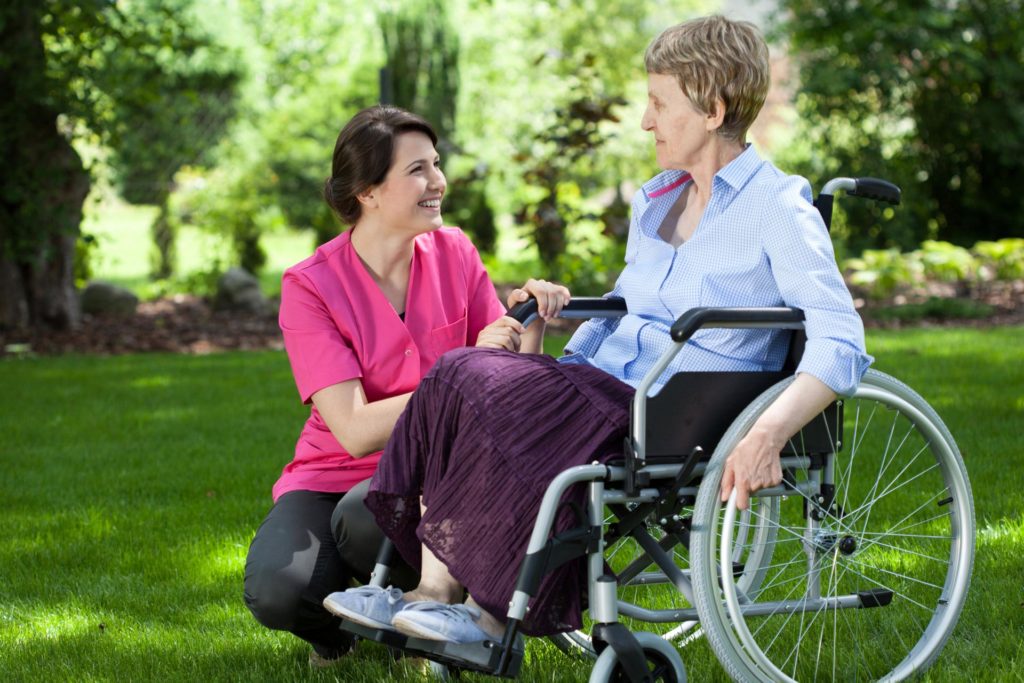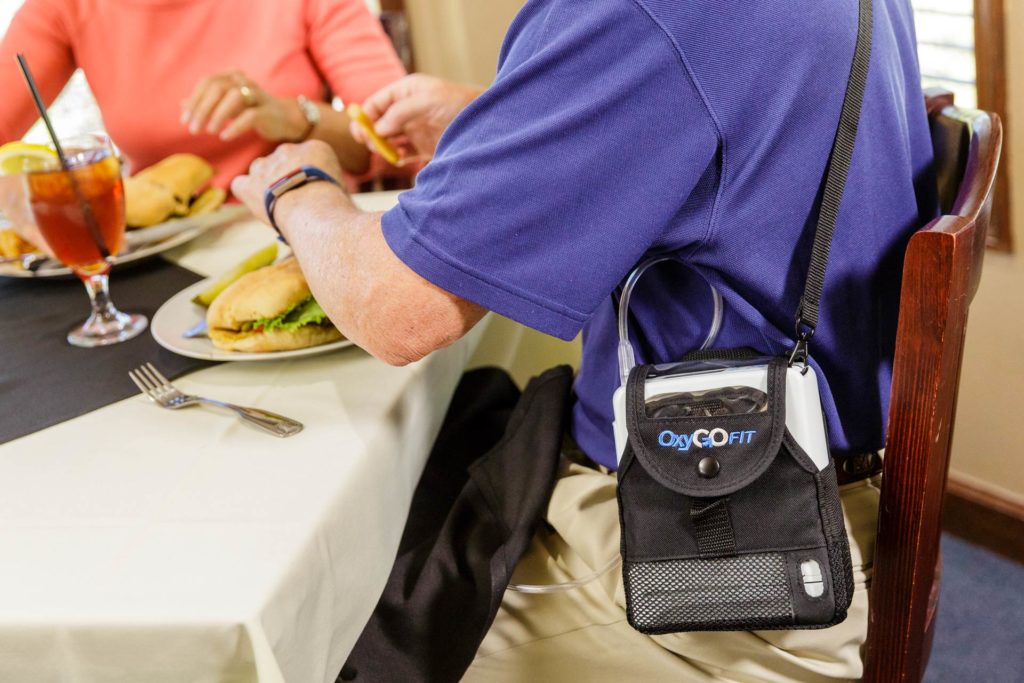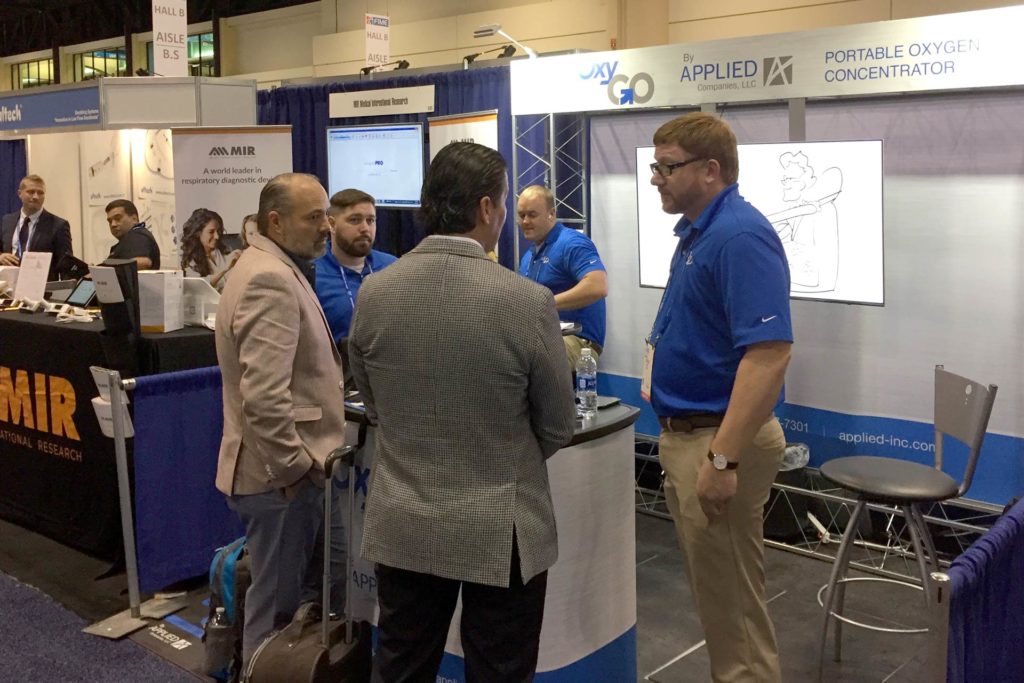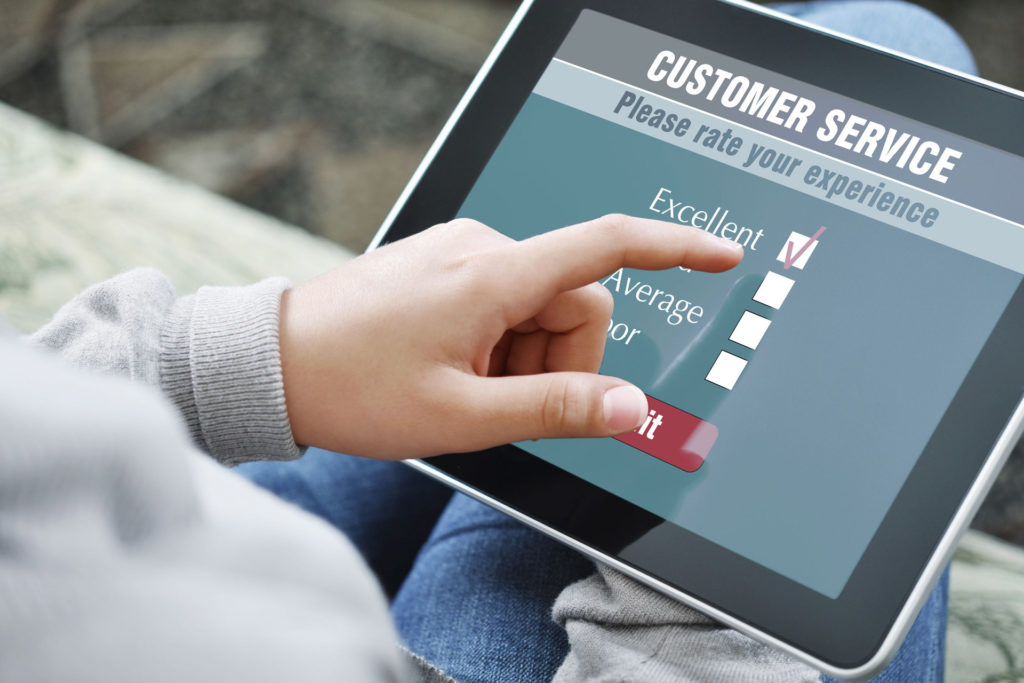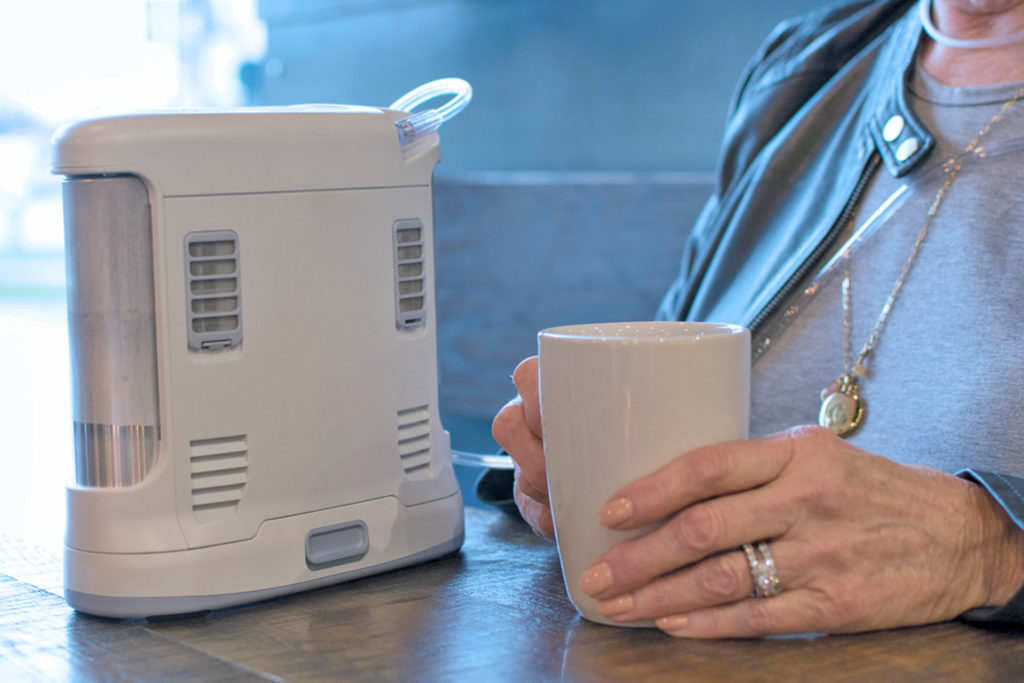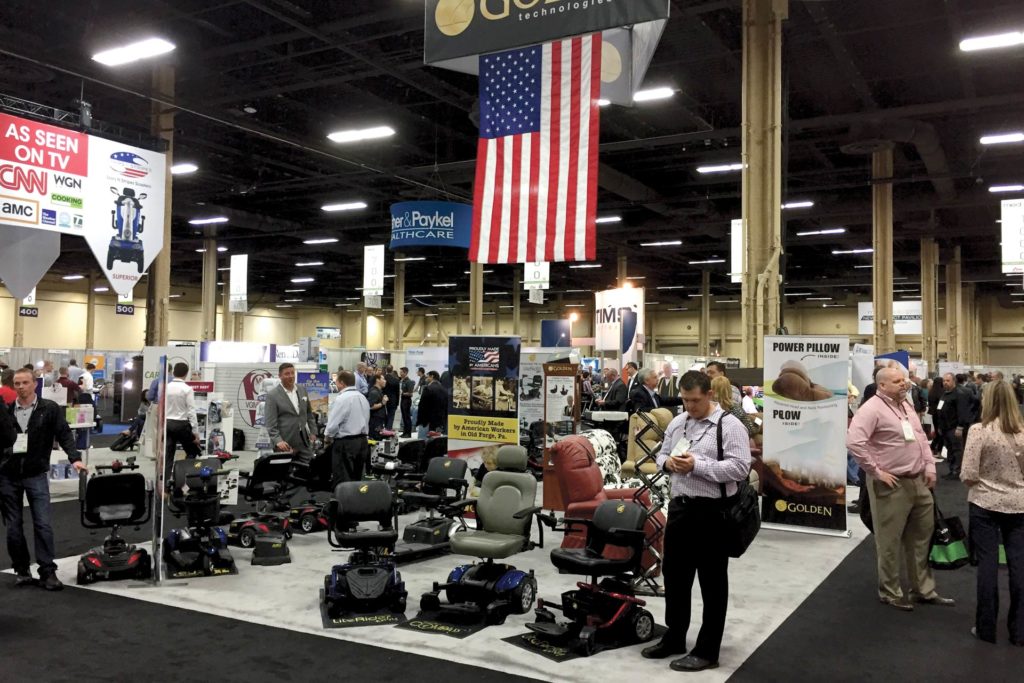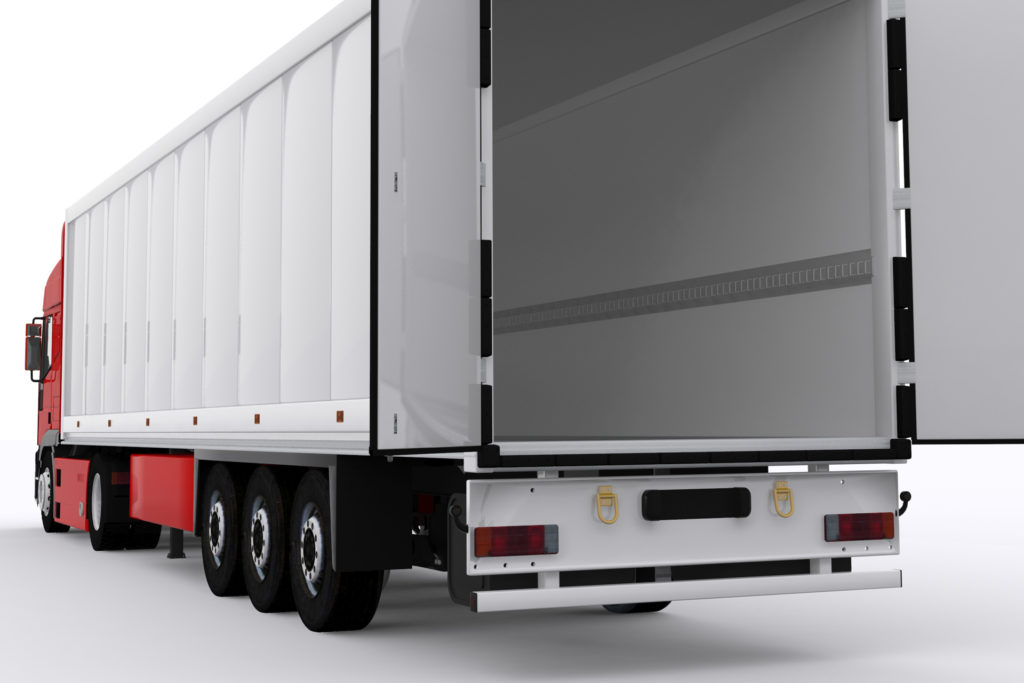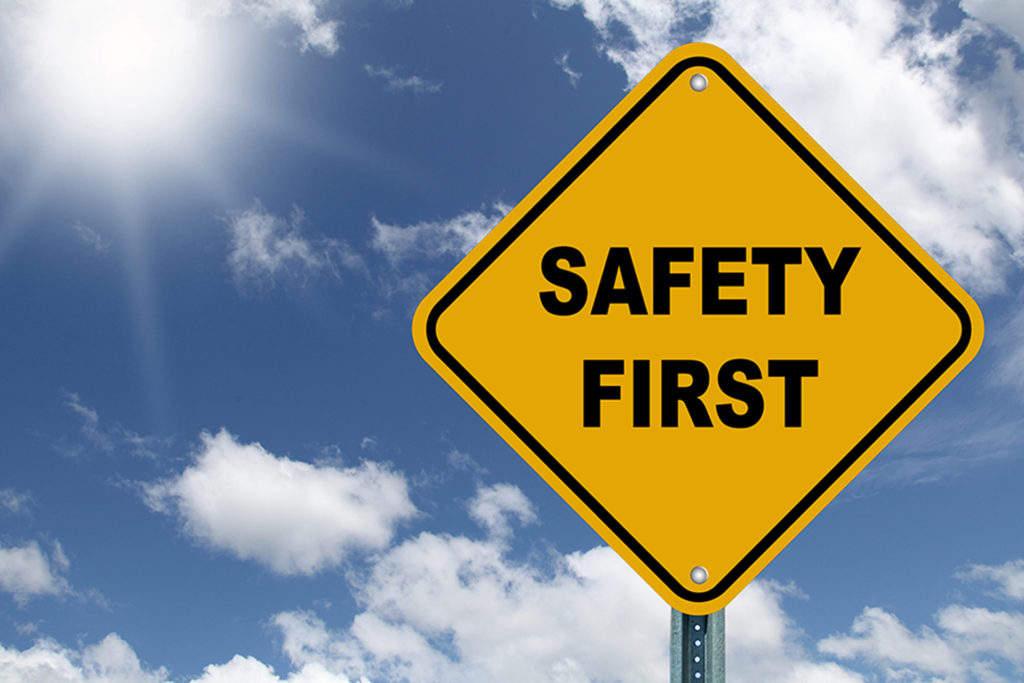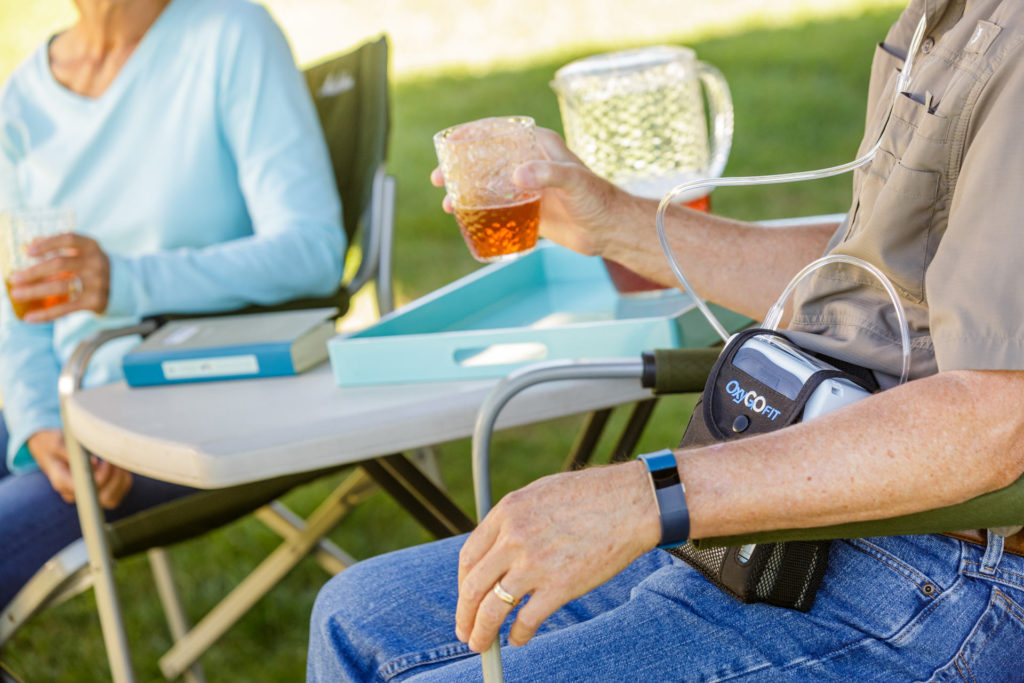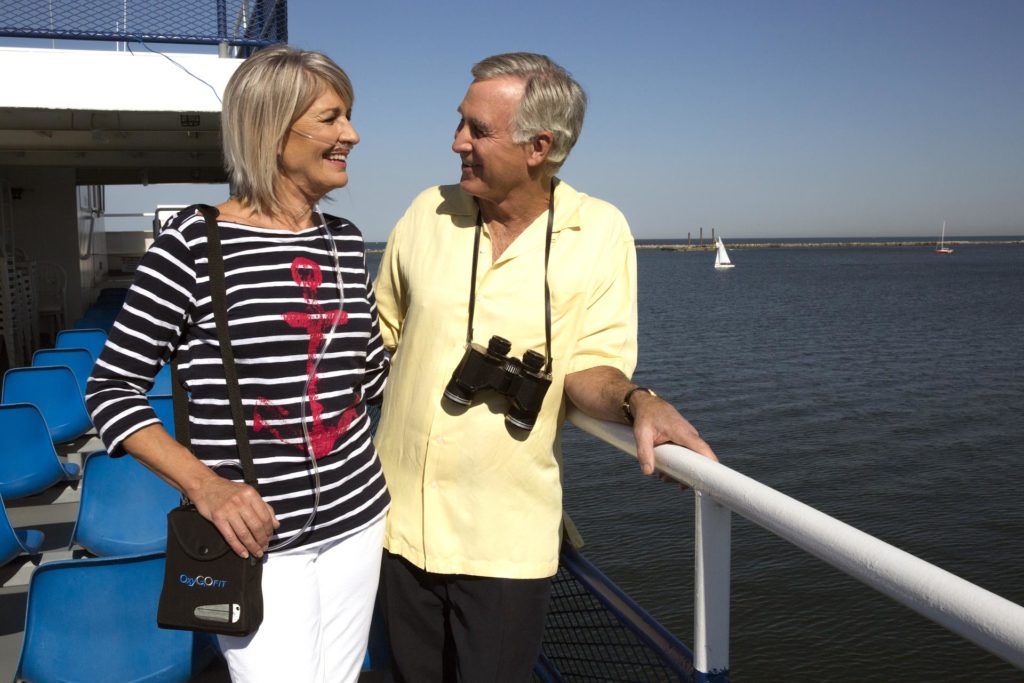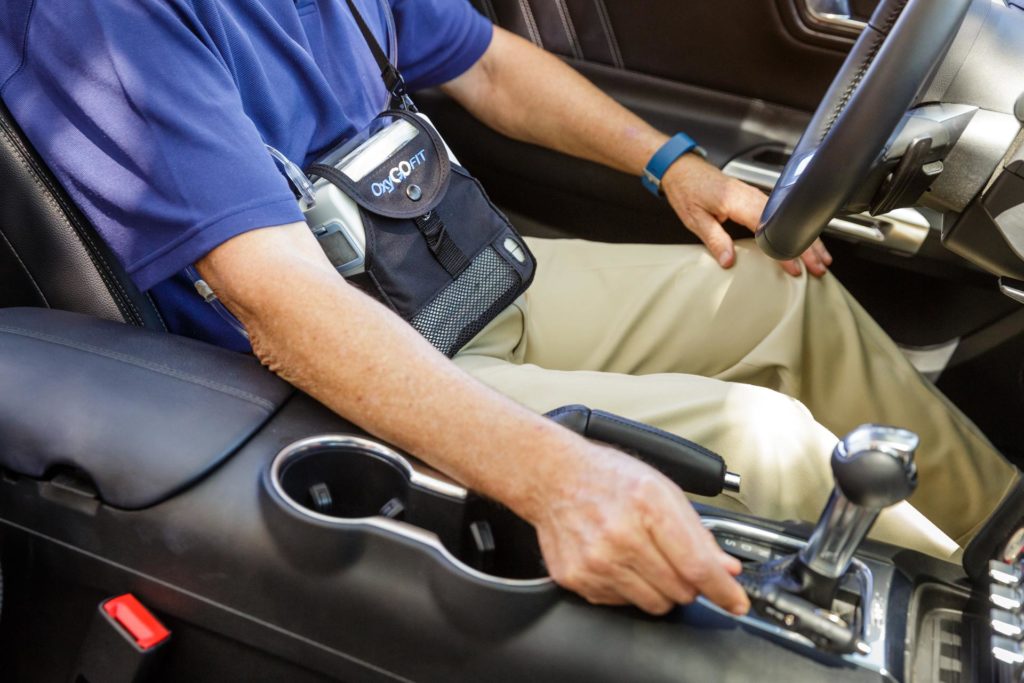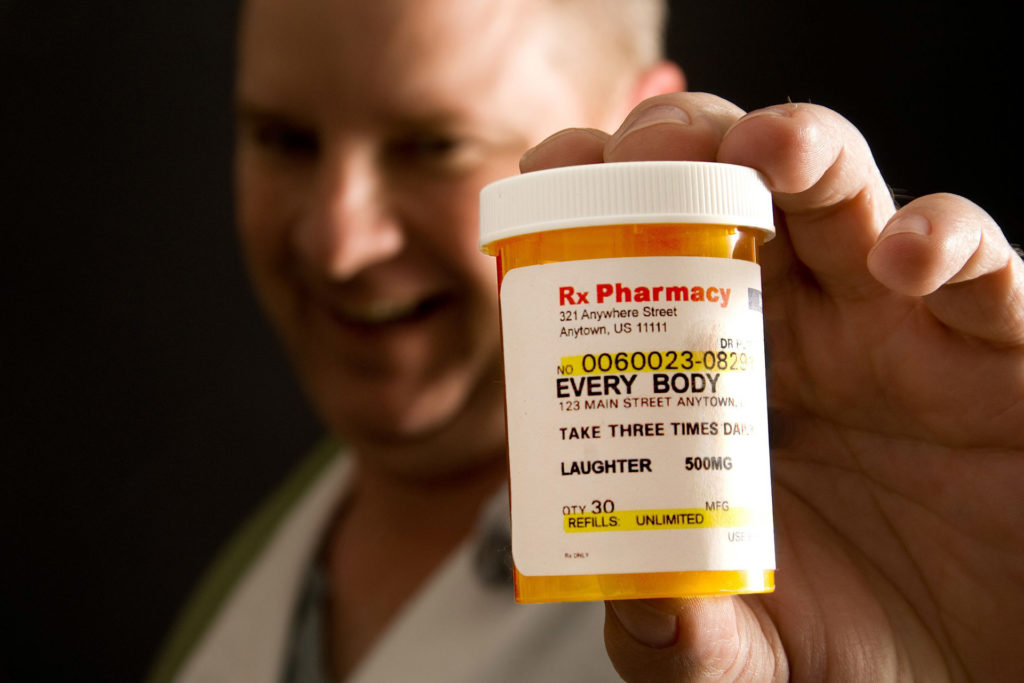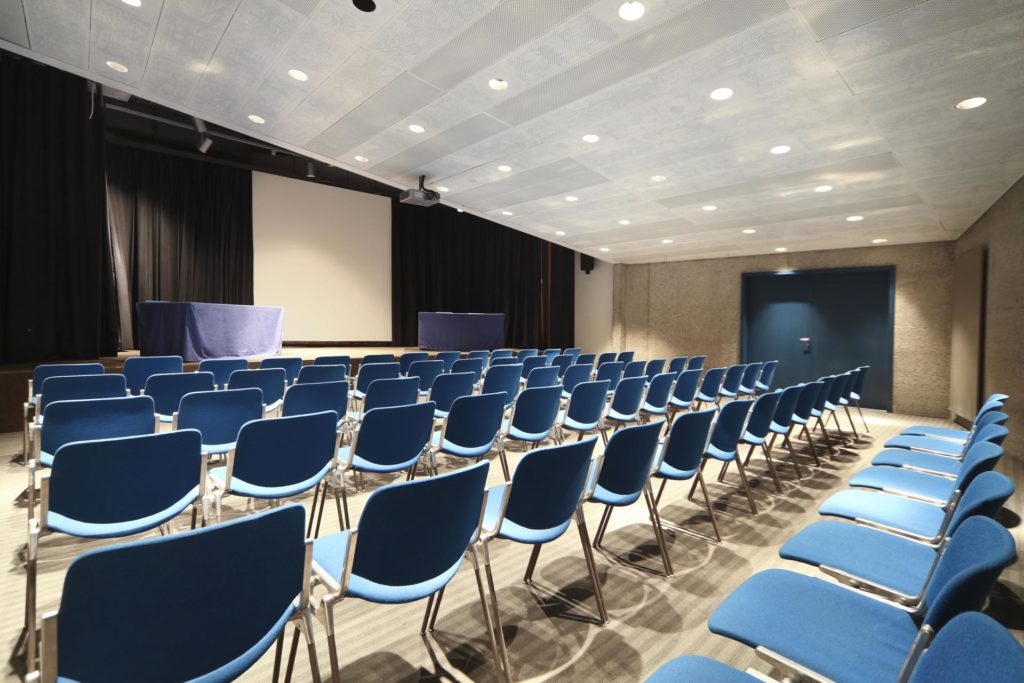Author: BOB MCQUOWN
Increasing Your Cash Flow
For more years than I wish to count, CMS has been busy—working hard to decrease their funding of DME products. The results of these cuts have driven equipment providers to focus on items that do not require insurance billing. I’m talking Cash! … Good ole’ American greenbacks! … Moolah! Some companies without a showroom have added one to encourage walk-in traffic, while others have redone theirs to be more appealing to cash buyers. You don’t need to be a brain surgeon to see that, as reimbursements are being chipped away, your bottom line is getting harder to maintain. Many of you feel that increasing cash sales will be your saving grace from this competitive bidding / insurance reimbursement mess. Below are a few ideas I’m throwing out for your consideration. If you are serious about increasing your cash sales, you need to roll up your sleeves and make the commitment! 1. Saturate the market I frequently hear radio commercials advertising scooters and lift chairs from one of our local DMEs. This company has been advertising for several years. Their competitors do not advertise in any media market and this DME is eating their lunch when it comes to scooter and lift chair sales. To be successful in advertising, you need to saturate the market in the beginning. After the first month, reduce your ad frequency by 1/3, and another 1/3 after the thi
Tips To Help You Grow Your Business
In 2005 I was given the responsibility of starting a new homecare company from scratch for the Cleveland Clinic. It was structured to focus only on providing respiratory products and services for the home. We were classified not as a DME but as a DMR (Durable Medical Respiratory) company. For those of you not familiar with the Cleveland Clinic, it’s a huge medical system consisting of 10 hospitals, 18 family practice centers, and over 47,000 employees. U.S. News & World Report ranked it the #2 medical system in the country. I knew it was going to be a daunting task, but I felt the experiences I had obtained in my career had well prepared me for the challenge. During that journey, I was fortunate to pick up tips along the way that helped me sustain yearly double-digit financial growth and keep our turnover rate around 0.4%. Here are five of the tips I found to be among the most beneficial over the years: 1. Make your employees your number one priority and the rest will follow. Unless you are superman (or woman), you cannot run your company by yourself. View your employees as your number one asset. Employees that are happy at the workplace generate a positive energy that is contagious. Don’t always hire based on skills. You can train the person to perform the skills necessary for the job. What you can’t teach is personality. An employee with a positive, upbe
Providing That “Perfect” Customer Service Experience
Good customer service is the most important value your company can provide to your customers. In a typical transaction, your customers expect everything to go smoothly, without delays or problems. For the purpose of this article, let’s call this “perfect” customer service. Customers simply expect their transactions to proceed in a timely manner with no surprises and without glitches. Any variation or miscue from their expectations usually ends in a negative experience which could cost you a customer—and no one wants that to happen. The good news is that you don’t have to deliver a life changing customer service experience… just a “perfect” one. Here’s a customer service story I heard long ago. It’s a great example of both perfect and horrendous customer service happening at the same time. A lady flew into the Denver airport, rented a car and checked into her hotel. She was scheduled to be the keynote speaker at a conference the following day at another location. The next morning she discovered her car would not start. She returned to the hotel lobby front desk to use a courtesy phone to call the rental car company. “Sorry lady, there’s nothing I can do at this moment,” said the car agent. She pleaded and told him she had an important meeting to get to and needed a replacement car right away. After receiving
More Tips for your Traveling Oxygen Patients
Just because a patient is on oxygen doesn’t mean that they are stuck at home and cannot travel. On the contrary, today it is much easier for the typical oxygen patient to travel by car, train, plane or cruise liner. Before the jet setting begins, here are a few tips you should advise your patients about before they leave home—to make it easier for both of you to breathe easy during any trip! Have the patient check with their doctor first. Patients need to consider avoiding places with extreme hot or cold temperatures, and places such as large cities with heavy pollution. Patients should keep a copy of their prescription with them. If their oxygen equipment malfunctions, a copy of the prescription will make acquiring a backup source of oxygen much easier to obtain. Patients who travel with a POC should carry a letter of necessity for oxygen with them. The FAA requires this when taking portable oxygen concentrators on board and they will have to show this to them when checking in. If traveling by air, a POC is the only way to go. High pressure cylinders and liquid vessels are not allowed onboard aircraft. The only approved oxygen source permitted on today’s flights are portable oxygen concentrators, and the FAA must approve each POC individually. The back label of the POC will have the FAA approval listed. Most airlines require that you have enough extra battery li
A Checklist for Picking the Right POC
More and more homecare companies are purchasing portable concentrators because they recognize the need to decrease the number of cylinder deliveries and grow their non-delivery model. These companies realize that most of their profits made in today’s lower reimbursement climate are being gobbled up by repetitive delivery costs. Here is a checklist of questions you should ask any POC salesperson. It’s not glamorous. It’s not exciting. But asking these questions will save you and your patients money and make your oxygen program much more profitable in the long run. The answers will help guide you in making the right POC purchasing decisions. Patients need the following, so don’t hesitate to ask: Does the manufacturer put in writing that its portable concentrator can be used during sleep? Does the manufacturer put in writing that its POC can be used with more than 20 feet of tubing — plus cannula? Does the POC have a built-in oxygen analyzer? Does the POC have a backup rate that will engage automatically if a breath isn’t sensed in 60 seconds? How much does it cost to replace the sieve beds? How much are replacement batteries? Can both the battery and sieve beds be replaced in literally seconds on site or does it need to go back to the manufacturer for service? (Hint—that’s expensive!) Does the POC’s battery charge, not just mai
Using Credit to Leverage Cash Sales
Being Manager of Respiratory Therapy for the Cleveland Clinic was one of the most rewarding experiences of my life. We were part of the Cleveland Clinic at Home division which also included Home Health Nursing, Home Health Hospice and Pharmacy. I basically started from scratch on my first day. We had no forms, policies or procedures. I was initially given two 4’x8’ shelves in the warehouse because my administration thought that RT was just tubing and connectors. They thought differently after the first 24 hours. As our patient base grew quickly, so did the demand for portable oxygen. We had many patients who traveled and needed oxygen to meet their needs. Back then we were limited as to what we could provide. Our first transportable concentrators weighed 19 lbs. and although they did a much nicer job than cylinders, they were still bulky to navigate and heavy for the patients to pick up. And many of our patients could not afford them because access to credit was so restrictive. Flash forward to today and you can show almost all your patients an affordable path to purchasing POCs and other homecare products. This is because at OxyGo®, we have added two new financing programs that I know will help you increase cash sales and overcome customer affordability issues: OxyCare Total Advantage™ and Care Credit Advantage. There are 78 million baby bo
Then ... and Now
This past May, I wrote a column called “Keeping Concentrators New Car Smell Fresh”. It referenced how to deal with foul smelling rental equipment being returned to a DME company. The odor could have come from several sources, but the most common cause was almost always smoking. The odor had been absorbed into the machine and the DME had found it next to impossible to get out. I detailed how, when I was at the Cleveland Clinic, we purchased a purifier that would take these odors out easily and effectively. It allowed us to restore the equipment to pristine condition for use by the next patient. I received many requests asking where they could find this product. I forwarded the information and asked each respondent to let me know how it was working. Here are just a few of the many responses I received: JM said: “Yes. We have the purifier and it works wonders.” BW said: “Thanks for the great article. We purchased the purifier and have used it several times on equipment that had odors our cleaning tech could not remove. After only one hour the odors were completely gone. Thanks again, Bob.” DC said: “Great article regarding equipment cleaning. We purchased the purifier after you gave us the name and I must say it really works. We no longer are deciding whether to throw out bad smelling equipment or just store it on the shelf. Usually a one hour treatment will take care of the odor. Thanks again for the information. T
The Next Big Thing in Portable Oxygen Concentrators is HERE! | Home HealthCare Today
At Medtrade Fall 2016, the OxyGo® booth was a very busy place to be. There was considerable buzz and excitement surrounding the introduction of OxyGo’s newest, smallest, and lightest 3 setting pulse dose concentrator, the OxyGo FIT ™. This latest member of the OxyGo family hit the marketplace in late October and was officially introduced to the homecare world at the Medtrade convention in Atlanta, Georgia. The OxyGo FIT is small and extremely lightweight. It weighs just 2.8 pounds with a single battery and can operate up to 5.8 hours using a double battery. It measures 5.91” Long, 2.68” wide and 7.2” height. Oxygen output is identical to the OxyGo; 210ml/min at setting 1; 420 ml/min at setting 2 and 630 ml/min at setting 3. The OxyGo FIT can be powered with AC (100-240 V, 50-60 Hz (auto sensing to allow worldwide use). DC power cable allows for mobile use in the car and charges the battery at all 3 settings. The single battery will operate the OxyGo FIT for up to 2.7 hours. The OxyGo FIT is quiet and produces 40 decibels at flow setting of 2. OxyGo concentrators are truly portable because they can be used 24/7. They can accommodate up to 25 feet of tubing, including nasal cannula, and still deliver oxygen to your patient. This is a huge benefit not offered by most other brands. It gives your patients more freedom to roam. I met many attendees at this past Medtrade who had no idea that a concentrator could recognize and d
Connecting with Medtrade — The Place To Be
I feel fortunate to have attended the recently concluded fall 2016 Medtrade show in Atlanta. It reminds me that the more things change, the more they remain the same. This is true even with great forward advances in technology. I attended my first Medtrade show in 1993. Times were tough for many people because of extreme weather. In March that year the Great Blizzard of 1993 struck the eastern U.S., bringing snowfall and severe weather from Quebec all the way to Cuba. And I remember the great flood of 1993 that started in April and flooded large portions of the American Midwest. But on the business front, the economy was improving. In December the unemployment rate fell to 6.5%, the lowest since January of 1991. This was the year that the North American Free Trade Agreement (NAFTA) passed the legislative houses in the United States, Canada and Mexico. I found that first Medtrade show I attended exhilarating on many fronts. The people I met were encouraging. The products I saw were the newest of the new. Walking into the show was breathtaking and on the show floor you could see and touch any product you want related to home healthcare. For someone like myself, a proud manager of a hospital owned DME company, it was THE PLACE to be to get great information and to make great contacts. And all these years later, it’s still THE PLACE to be. It’s different today in some respects. Technology breakthroughs have had an impact. In 1993, for example, there we
Blog - Author: BOB MCQUOWN
Author: BOB MCQUOWN
Increasing Your Cash Flow
For more years than I wish to count, CMS has been busy—working hard to decrease their funding of DME products. The results of these cuts have driven equipment providers to focus on items that do not require insurance billing. I’m talking Cash! … Good ole’ American greenbacks! … Moolah! Some companies without a showroom have added one to encourage walk-in traffic, while others have redone theirs to be more appealing to cash buyers. You don’t need to be a brain surgeon to see that, as reimbursements are being chipped away, your bottom line is getting harder to maintain. Many of you feel that increasing cash sales will be your saving grace from this competitive bidding / insurance reimbursement mess. Below are a few ideas I’m throwing out for your consideration. If you are serious about increasing your cash sales, you need to roll up your sleeves and make the commitment! 1. Saturate the market I frequently hear radio commercials advertising scooters and lift chairs from one of our local DMEs. This company has been advertising for several years. Their competitors do not advertise in any media market and this DME is eating their lunch when it comes to scooter and lift chair sales. To be successful in advertising, you need to saturate the market in the beginning. After the first month, reduce your ad frequency by 1/3, and another 1/3 after the thi
Tips To Help You Grow Your Business
In 2005 I was given the responsibility of starting a new homecare company from scratch for the Cleveland Clinic. It was structured to focus only on providing respiratory products and services for the home. We were classified not as a DME but as a DMR (Durable Medical Respiratory) company. For those of you not familiar with the Cleveland Clinic, it’s a huge medical system consisting of 10 hospitals, 18 family practice centers, and over 47,000 employees. U.S. News & World Report ranked it the #2 medical system in the country. I knew it was going to be a daunting task, but I felt the experiences I had obtained in my career had well prepared me for the challenge. During that journey, I was fortunate to pick up tips along the way that helped me sustain yearly double-digit financial growth and keep our turnover rate around 0.4%. Here are five of the tips I found to be among the most beneficial over the years: 1. Make your employees your number one priority and the rest will follow. Unless you are superman (or woman), you cannot run your company by yourself. View your employees as your number one asset. Employees that are happy at the workplace generate a positive energy that is contagious. Don’t always hire based on skills. You can train the person to perform the skills necessary for the job. What you can’t teach is personality. An employee with a positive, upbe
Providing That “Perfect” Customer Service Experience
Good customer service is the most important value your company can provide to your customers. In a typical transaction, your customers expect everything to go smoothly, without delays or problems. For the purpose of this article, let’s call this “perfect” customer service. Customers simply expect their transactions to proceed in a timely manner with no surprises and without glitches. Any variation or miscue from their expectations usually ends in a negative experience which could cost you a customer—and no one wants that to happen. The good news is that you don’t have to deliver a life changing customer service experience… just a “perfect” one. Here’s a customer service story I heard long ago. It’s a great example of both perfect and horrendous customer service happening at the same time. A lady flew into the Denver airport, rented a car and checked into her hotel. She was scheduled to be the keynote speaker at a conference the following day at another location. The next morning she discovered her car would not start. She returned to the hotel lobby front desk to use a courtesy phone to call the rental car company. “Sorry lady, there’s nothing I can do at this moment,” said the car agent. She pleaded and told him she had an important meeting to get to and needed a replacement car right away. After receiving
More Tips for your Traveling Oxygen Patients
Just because a patient is on oxygen doesn’t mean that they are stuck at home and cannot travel. On the contrary, today it is much easier for the typical oxygen patient to travel by car, train, plane or cruise liner. Before the jet setting begins, here are a few tips you should advise your patients about before they leave home—to make it easier for both of you to breathe easy during any trip! Have the patient check with their doctor first. Patients need to consider avoiding places with extreme hot or cold temperatures, and places such as large cities with heavy pollution. Patients should keep a copy of their prescription with them. If their oxygen equipment malfunctions, a copy of the prescription will make acquiring a backup source of oxygen much easier to obtain. Patients who travel with a POC should carry a letter of necessity for oxygen with them. The FAA requires this when taking portable oxygen concentrators on board and they will have to show this to them when checking in. If traveling by air, a POC is the only way to go. High pressure cylinders and liquid vessels are not allowed onboard aircraft. The only approved oxygen source permitted on today’s flights are portable oxygen concentrators, and the FAA must approve each POC individually. The back label of the POC will have the FAA approval listed. Most airlines require that you have enough extra battery li
A Checklist for Picking the Right POC
More and more homecare companies are purchasing portable concentrators because they recognize the need to decrease the number of cylinder deliveries and grow their non-delivery model. These companies realize that most of their profits made in today’s lower reimbursement climate are being gobbled up by repetitive delivery costs. Here is a checklist of questions you should ask any POC salesperson. It’s not glamorous. It’s not exciting. But asking these questions will save you and your patients money and make your oxygen program much more profitable in the long run. The answers will help guide you in making the right POC purchasing decisions. Patients need the following, so don’t hesitate to ask: Does the manufacturer put in writing that its portable concentrator can be used during sleep? Does the manufacturer put in writing that its POC can be used with more than 20 feet of tubing — plus cannula? Does the POC have a built-in oxygen analyzer? Does the POC have a backup rate that will engage automatically if a breath isn’t sensed in 60 seconds? How much does it cost to replace the sieve beds? How much are replacement batteries? Can both the battery and sieve beds be replaced in literally seconds on site or does it need to go back to the manufacturer for service? (Hint—that’s expensive!) Does the POC’s battery charge, not just mai
Using Credit to Leverage Cash Sales
Being Manager of Respiratory Therapy for the Cleveland Clinic was one of the most rewarding experiences of my life. We were part of the Cleveland Clinic at Home division which also included Home Health Nursing, Home Health Hospice and Pharmacy. I basically started from scratch on my first day. We had no forms, policies or procedures. I was initially given two 4’x8’ shelves in the warehouse because my administration thought that RT was just tubing and connectors. They thought differently after the first 24 hours. As our patient base grew quickly, so did the demand for portable oxygen. We had many patients who traveled and needed oxygen to meet their needs. Back then we were limited as to what we could provide. Our first transportable concentrators weighed 19 lbs. and although they did a much nicer job than cylinders, they were still bulky to navigate and heavy for the patients to pick up. And many of our patients could not afford them because access to credit was so restrictive. Flash forward to today and you can show almost all your patients an affordable path to purchasing POCs and other homecare products. This is because at OxyGo®, we have added two new financing programs that I know will help you increase cash sales and overcome customer affordability issues: OxyCare Total Advantage™ and Care Credit Advantage. There are 78 million baby bo
Then ... and Now
This past May, I wrote a column called “Keeping Concentrators New Car Smell Fresh”. It referenced how to deal with foul smelling rental equipment being returned to a DME company. The odor could have come from several sources, but the most common cause was almost always smoking. The odor had been absorbed into the machine and the DME had found it next to impossible to get out. I detailed how, when I was at the Cleveland Clinic, we purchased a purifier that would take these odors out easily and effectively. It allowed us to restore the equipment to pristine condition for use by the next patient. I received many requests asking where they could find this product. I forwarded the information and asked each respondent to let me know how it was working. Here are just a few of the many responses I received: JM said: “Yes. We have the purifier and it works wonders.” BW said: “Thanks for the great article. We purchased the purifier and have used it several times on equipment that had odors our cleaning tech could not remove. After only one hour the odors were completely gone. Thanks again, Bob.” DC said: “Great article regarding equipment cleaning. We purchased the purifier after you gave us the name and I must say it really works. We no longer are deciding whether to throw out bad smelling equipment or just store it on the shelf. Usually a one hour treatment will take care of the odor. Thanks again for the information. T
The Next Big Thing in Portable Oxygen Concentrators is HERE! | Home HealthCare Today
At Medtrade Fall 2016, the OxyGo® booth was a very busy place to be. There was considerable buzz and excitement surrounding the introduction of OxyGo’s newest, smallest, and lightest 3 setting pulse dose concentrator, the OxyGo FIT ™. This latest member of the OxyGo family hit the marketplace in late October and was officially introduced to the homecare world at the Medtrade convention in Atlanta, Georgia. The OxyGo FIT is small and extremely lightweight. It weighs just 2.8 pounds with a single battery and can operate up to 5.8 hours using a double battery. It measures 5.91” Long, 2.68” wide and 7.2” height. Oxygen output is identical to the OxyGo; 210ml/min at setting 1; 420 ml/min at setting 2 and 630 ml/min at setting 3. The OxyGo FIT can be powered with AC (100-240 V, 50-60 Hz (auto sensing to allow worldwide use). DC power cable allows for mobile use in the car and charges the battery at all 3 settings. The single battery will operate the OxyGo FIT for up to 2.7 hours. The OxyGo FIT is quiet and produces 40 decibels at flow setting of 2. OxyGo concentrators are truly portable because they can be used 24/7. They can accommodate up to 25 feet of tubing, including nasal cannula, and still deliver oxygen to your patient. This is a huge benefit not offered by most other brands. It gives your patients more freedom to roam. I met many attendees at this past Medtrade who had no idea that a concentrator could recognize and d
Connecting with Medtrade — The Place To Be
I feel fortunate to have attended the recently concluded fall 2016 Medtrade show in Atlanta. It reminds me that the more things change, the more they remain the same. This is true even with great forward advances in technology. I attended my first Medtrade show in 1993. Times were tough for many people because of extreme weather. In March that year the Great Blizzard of 1993 struck the eastern U.S., bringing snowfall and severe weather from Quebec all the way to Cuba. And I remember the great flood of 1993 that started in April and flooded large portions of the American Midwest. But on the business front, the economy was improving. In December the unemployment rate fell to 6.5%, the lowest since January of 1991. This was the year that the North American Free Trade Agreement (NAFTA) passed the legislative houses in the United States, Canada and Mexico. I found that first Medtrade show I attended exhilarating on many fronts. The people I met were encouraging. The products I saw were the newest of the new. Walking into the show was breathtaking and on the show floor you could see and touch any product you want related to home healthcare. For someone like myself, a proud manager of a hospital owned DME company, it was THE PLACE to be to get great information and to make great contacts. And all these years later, it’s still THE PLACE to be. It’s different today in some respects. Technology breakthroughs have had an impact. In 1993, for example, there we






